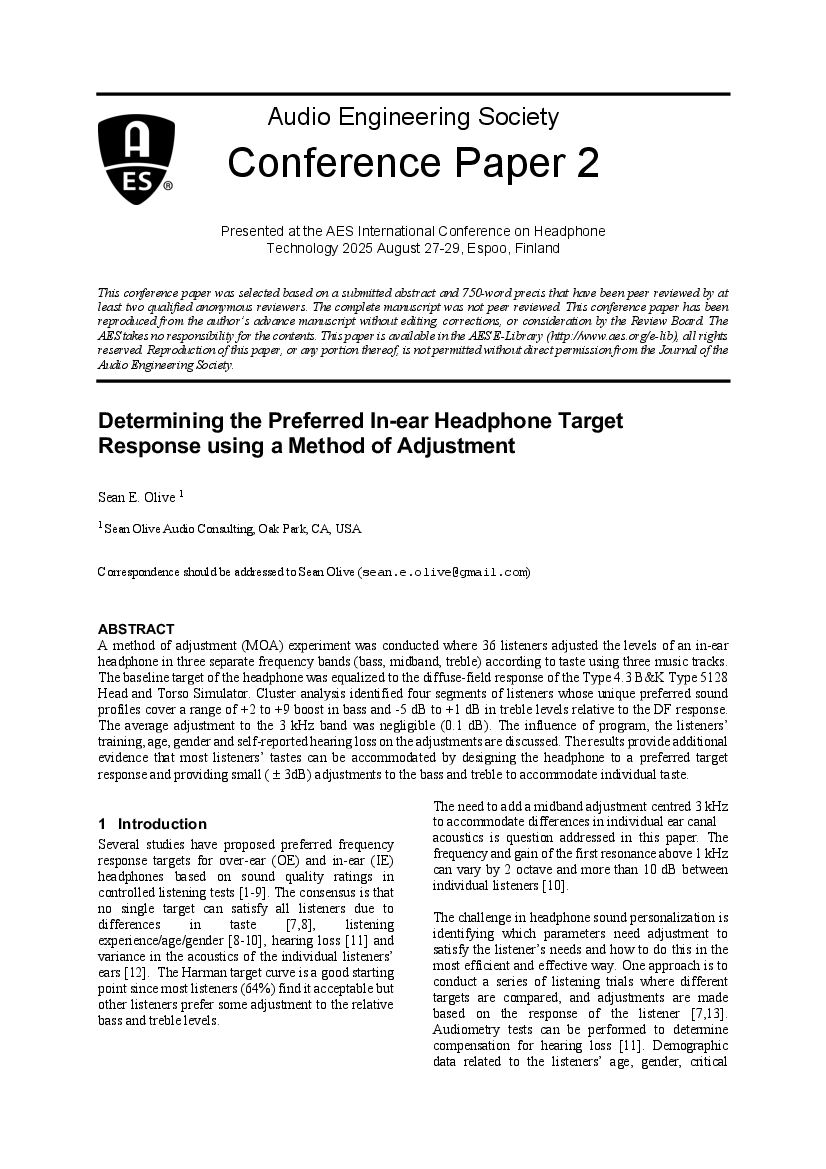Home / Publications / E-library page
You are currently logged in as an
Institutional Subscriber.
If you would like to logout,
please click on the button below.
Home / Publications / E-library page
Only AES members and Institutional Journal Subscribers can download
A method of adjustment (MOA) experiment was conducted where 36 mostly trained listeners adjusted the levels of an in-ear headphone in three separate frequency bands ( a bass shelf, an upper midrange peak/dip centered at 3 kHz, and a treble shelf) according to taste using three music tracks. The baseline target of the headphone was equalized to the diffuse-field response for the Type 4.3 B&K Type 5128 Head and Torso Simulator.
Cluster analysis based on similarities in the preferred levels identified 4 segments of listeners whose preferences cover a range of +2 to +9 boost in bass and -5dB to +2 dB in treble relative to the DF response. On average, the adjustment to the 3 kHz band was negligible (0.1 dB). The influence of program and the listeners training, age, gender and self-reported hearing loss on the adjustments are discussed. The preferred target response curves from this study are compared to other proposed headphone target curves.
The study provides additional evidence that most listeners tastes can be accommodated by designing the headphone to a preferred target response and providing small ( ? 3dB) adjustments to the bass and treble to accommodate individual taste.
Author (s): Olive, Sean
Affiliation:
Independent Consultant
(See document for exact affiliation information.)
Publication Date:
2025-08-18
Import into BibTeX
Session subject:
Headphone Technology
Permalink: https://aes2.org/publications/elibrary-page/?id=22928
(1614KB)
Click to purchase paper as a non-member or login as an AES member. If your company or school subscribes to the E-Library then switch to the institutional version. If you are not an AES member Join the AES. If you need to check your member status, login to the Member Portal.

Olive, Sean; 2025; The Preferred In-Ear Headphone Target Curve Based on Method of Adjustments [PDF]; Independent Consultant; Paper 2; Available from: https://aes2.org/publications/elibrary-page/?id=22928
Olive, Sean; The Preferred In-Ear Headphone Target Curve Based on Method of Adjustments [PDF]; Independent Consultant; Paper 2; 2025 Available: https://aes2.org/publications/elibrary-page/?id=22928